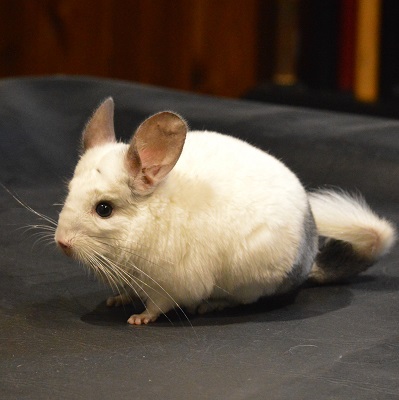
Chinchillas – they’re soft and cute and they were a little reluctant to give up the spotlight as our Animal of the Month for June. But this was the third time we have had chinchillas as our featured creature, so they know they will get another turn again and finally agreed to make way for a new Animal of the Month now that July is underway. If you missed any of our tweets @ExoticPetVets on Twitter, here is a summary that you can reference anytime. Did you know?:
- There’s a reason why chinchillas (Chinchilla lanigera) have the soft thick fur for which they’re famous. They are endemic to the Andes mountains of South America and live at high elevations in the wild.
- Over millions of years of evolution, chinchillas developed fur which allows them to survive in harsh mountainous conditions where it can be very cold.
- Per follicle, humans have 1-3 hairs. But chinchillas have about 50-60 hairs per follicle, which makes their fur among the softest and most dense of all land mammals.
- Chinchillas are endemic to the Andes mountains in South America. They were once found in Peru, Argentina, and Bolivia but it’s believed that they are now extinct in these areas.
- Today, wild chinchillas are found only in the mountains of northern Chile. The IUCN Red List’s latest estimates put the wild population of adult chinchillas at 5,350 – and that number continues to decrease.
- The soft, dense fur that helps chinchillas survive in the wild is, unfortunately, a reason why they are headed toward extinction in the wild. That’s because humans love chinchilla fur.
- While chinchillas have natural predators such as birds of prey, foxes and snakes, it’s humans who present the most overwhelming threat to wild chinchillas.
- Humans have decimated the wild chinchilla population, mostly through relentless hunting for their fur. While it is now illegal to hunt wild chinchillas, poaching remains a problem.
- Wild chinchilla populations are also threatened by habitat loss due to human activity, such as mining and agriculture.
- Did you know that there are two species of chinchillas in existence today? – Chinchilla chinchilla and Chinchilla lanigera.
- Chinchilla chinchilla is the larger of the two chinchilla species. They have shorter tails, smaller ears, but necks that are thicker than Chinchilla lanigera.
- The species of chinchilla that is kept in captivity – and the one with which everyone is most familiar – is Chinchilla lanigera, which is why we chose this species for our Animal Of The Month feature.
- Chinchilla lanigera may look a little like a cross between a mouse, a rabbit and a squirrel, but they are more closely related to porcupines and guinea pigs.
- From their heads to the base of their tails, chinchillas are usually between 9-15 inches (23-38 cms) in length. Their tails add another 3-6 inches (7.5-15 cms) in length.
- Chinchillas are small rodents with large heads, ears and eyes. Their forelimbs are much smaller and not as developed as their hindlimbs, which they use to hop around (although chinchillas mostly move around on all fours).
- Chinchillas are considered to be a sexually dimorphic species, meaning there are visual clues that differentiate the genders. Female chinchillas are larger than the males, with females weighing up to 800 grams while males weigh up to 500 grams.
- According to the Merck Veterinary Manual, the original fur colour of wild chinchillas was a “mottled yellow-grey.”
- We are most familiar with chinchillas having a dark silver or bluish-grey colour, which was achieved through the selective breeding of chinchillas in captivity.
- Selective breeding of captive chinchillas have also resulted in colours such as white, beige, black, sapphire and charcoal. Chinchilla eye colour is normally black, but can also be pink or red depending on fur colour.
- When is breeding season for chinchillas? Well, that depends on which hemisphere they’re living in. In the Southern Hemisphere, they breed between May and November; while in the Northern Hemisphere, they breed between November and May.
- Female chinchillas can start having babies by the time they reach eight-months of age. Gestation averages 111 days and they will usually have two litters per year.
- While female chinchillas can give birth between one and six kits per litter, the average is two kits.
- At birth, chinchilla kits are very well developed – they have all of their fur and are born with their eyes open. Their mothers nurse them for about 6-8 weeks.
- Humans and chinchillas have something in common and it’s something that you would likely never suspect – it’s our hearing.
- Chinchillas and humans have similar sensitivities to sound and are both able to hear sounds within a similar frequency range. And chinchillas – like humans – both experience age-related hearing loss.
- This similar hearing ability, coupled with the easy access to the inner ear, has resulted in chinchillas being widely used in hearing research.
- Chinchillas are a long-lived rodent species. The average lifespan of wild chinchillas is 10 years. But in captivity, chinchillas can live up to 20 years with proper care.
As previously mentioned, this is the third time we have featured chinchillas as our Animal of the Month. Check out our blog posts from June 2014 and April 2017 to see our earlier tweets about chinchillas!

